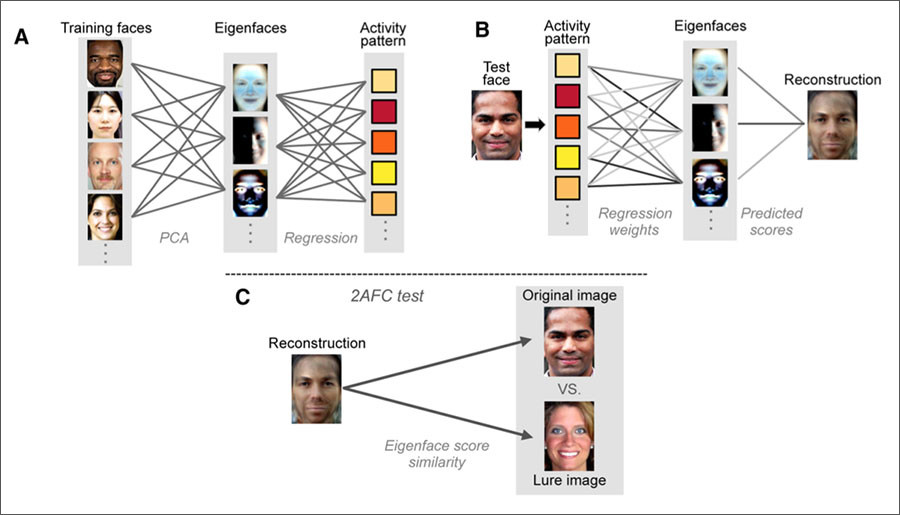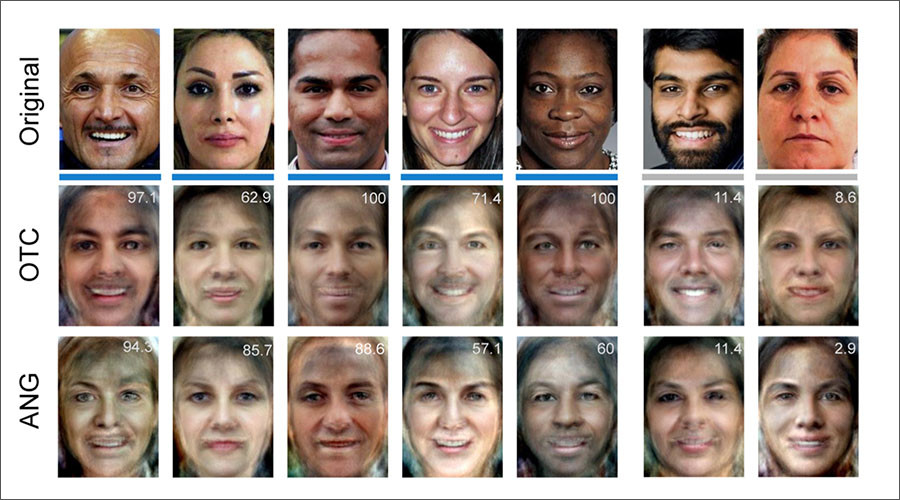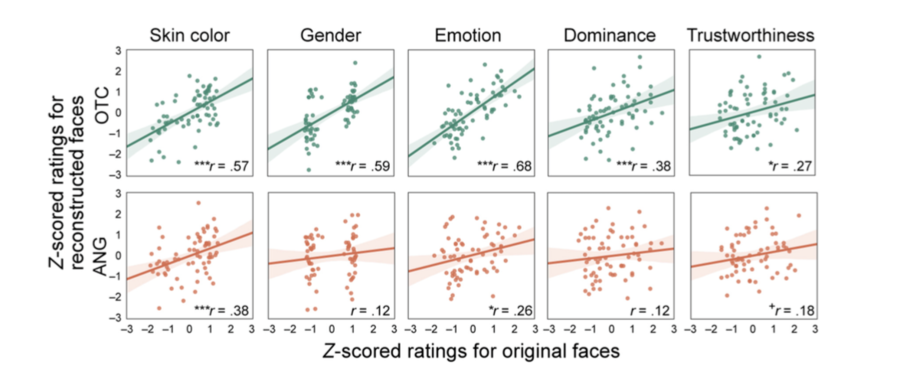 BackToConstitution
BackToConstitutionKeywords: bitcoin, cryptocurrency, cryptocurrencies, currency, money, money making, invest, investing, investment, savings, retirement, Social Security,
Quinn Michaels and I join forces in Las Vegas to discuss AI and investigate the connections between cryptocurrency, Artificial Intelligence and the events of October 1, 2017.

Mind-reading AI: Researchers decode faces from brainwave patterns (PHOTOS)
Artificial Intelligence can show who you are thinking about by analyzing brain scans and reconstructing an image of that person, a new study reveals.
Researchers from the Kuhl Lab at the University of Oregon explored how faces could be decoded from neural activity in the study Reconstructing Perceived and Retrieved Faces from Activity Patterns in Lateral Parietal Cortex, published in the Journal of Neuroscience.
Hongmi Lee and Brice A. Kuhl tested whether faces could be reconstructed from the ‘angular gyrus’ (ANG) located in the upper back area of the brain through functional magnetic resonance imaging (fMRI) activity patterns.
They conducted the experiment by making facial reconstructions based on brainwave patterns from participants, initially during their perception of faces and later just from memory.
Participants were shown more than 1,000 color photos of different faces, one after another, while an fMRI scan recorded their neural responses.
The researchers then applied principal component analysis (PCA) to generate 300 ‘eigenfaces’ - a set of vectors used in human face recognition. Each of these eigenfaces represented some statistical aspect of the data gathered in the scans and was related to particular neural activity.
“Activity patterns evoked by individual faces were then used to generate predicted eigenface values, which could be transformed into reconstructions of individual faces,” they wrote in the study.

The scientists then turned to the ‘mind-reading’ element of the experiment, showing participants a new set of faces and analyzing their neural responses to create eigenfaces.
They developed a digital reconstruction of faces based on this and found these eigenfaces were substantially more similar to the actual test faces than would be expected from chance.
Participants were asked to recall a face and hold it in their memory while these faces were reconstructed based on the neural activity in the ‘angular gyrus’ - a memory-related brain region.
This image shows the test faces along with reconstructions from the perception phase (based on activity in the occipitotemporal cortex or OTC) and the memory phase (based on activity in the angular gyrus or ANG).

While it's clear the reconstructions aren’t flawless, they do manage to capture some of the main features of the original faces.
The below chart shows the relationship between the properties of the original face and the reconstruction.

The study reveals that the reconstructions from the perceptual phase were generally better than the memory phase, but it highlights that in both areas of brain activity there are similarities to the original image - not only in skin color but also in perceived “dominance and trustworthiness” of the faces.
Ben Goertzel is Chief Scientist of robotics firm Hanson Robotics, Chairman of AI software company Novamente LLC, Chairman of the Artificial General Intelligence Society and the OpenCog Foundation.
SingularityNET Presents at Web Summit 2017
Sharing our vision at the largest tech conference in the world.
The SingularityNET team was proud to present at this year’s Web Summitconference, the largest tech gathering in the world. Our founder, Ben Goertzel, spoke about the evolution of AI and how SingularityNET fits into the future landscape of work, commerce, and intelligence.
In addition to Ben’s speech, the team was interviewed by BBC, CNN, Vice, Reuters, AP, Business Insider, France 24, El Globo, El Pais, EuroNews, Skynews, and more. We particularly enjoyed watching the prime minister of Estonia chat with Sophia. Thank you to Gary Kasparov for a wonderful, insightful conversation about the future potential of AI and robotics.
Here is a snippet of what Ben shared with fans at the conference:
“Inspired by my friendship with Ray Kurzweil and my experience helping out with Singularity University in Silicon Valley, I began work on a new platform, SingularityNET.
The vision: an open platform in which any AI developer on the planet can install their software, enabling it to reach any AI user on the planet. A platform in which AIs carrying out specific functions can work together seamlessly, helping diverse users in various ways and coordinating together into AI networks of increasingly general intelligence.”https://blog.singularitynet.io/singularitynet-presents-at-web-summit-2017-44e799a647c0
////////



No comments:
Post a Comment